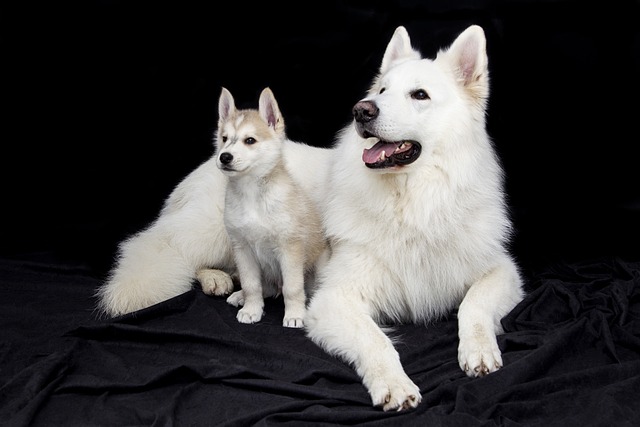
How can I tell if my dog's heatstroke is serious
Let’s be real: It’s a sticky August morning in Los Angeles, and you took your 2-year-old Golden Retriever, Max, for a walk a little later than usual
Let’s say you’re a new dog parent in Phoenix, sweating under the summer sun as your golden retriever, Bailey, pants beside you. You eye the clippers in the closet: Would trimming her fur keep her cooler? The answer depends on more than just the thermometer—let’s dive into when dogs need fur trims and when it’s better to let their coats be.
Dogs’ fur is a marvel of nature, evolved to protect them from harsh climates. Breeds with double coats (like huskies, labs, or malamutes) have a dense undercoat that insulates against cold and a coarse topcoat that repels water and blocks UV rays. In Phoenix’s 110°F heat, Bailey’s topcoat acts like a natural air conditioner, trapping cool air close to her skin and preventing sunburn. Trimming or shaving this coat can disrupt its protective layer, leaving her vulnerable to heatstroke (the topcoat reflects sunlight, while a shorn coat absorbs it) and skin damage from bugs or debris. On the flip side, single-coated breeds like poodles, Maltese, or Shih Tzus have fur that grows continuously, prone to matting and dirt-trapping if not trimmed—their “hair” (yes, it’s different from double coats!) lacks the insulating underlayer, so regular cuts keep them comfortable and clean.
So, how do you decide? Start by checking your dog’s breed and coat type. Double-coated dogs rarely need trims beyond shaping around the paws (to prevent ice/snow balls in winter or burrs in summer) or sanitary areas (around the rear for hygiene). Shaving them is a big no-no—imagine someone peeling off your sunscreen before a beach day. For single-coated or curly-haired breeds, aim for trims every 4–8 weeks to prevent mats (which trap moisture and cause skin infections, especially in humid places like Florida). Use a professional groomer familiar with breed standards—they’ll know to leave enough length for sun protection (1–2 inches is ideal for poodles in California’s sun).

Here’s a step-by-step for trimming: First, brush thoroughly to remove tangles (a detangling spray helps for stubborn mats in New York apartment pups with limited outdoor space). For paws, trim excess fur between the pads with blunt-tipped scissors to improve grip on hardwood floors. Around the ears and eyes, use safety clippers on a low setting to prevent hair from obstructing vision (common in breeds like cockapoos in Chicago). Always reward calm behavior with treats—positive reinforcement, as recommended by the APDT, makes grooming a stress-free experience, not a battle.
This ties into broader pet care norms in the U.S. Animal welfare laws in states like Colorado prohibit “harmful grooming,” which includes shaving double coats or creating cuts that expose skin to irritation. It’s not just about legality; it’s about recognizing your dog’s natural needs. In apartment complexes in Seattle, trimming paw fur reduces the dirt tracked inside, a courtesy to neighbors who share hallways. When visiting dog parks, a well-groomed coat (neither matted nor shorn) shows you’re a responsible owner, just like carrying poop bags (required by law in 95% of U.S. cities) and keeping vaccinations up-to-date.
For dogs with seasonal shedding (hello, spring in Texas!), focus on brushing—daily with a deshedding tool—rather than trimming. This removes loose undercoat without damaging the protective top layer. If you do trim, avoid DIY disasters: A YouTube tutorial might seem tempting, but nicking a sensitive area (like the thin skin on a Greyhound’s belly in Miami) can lead to vet visits.
In the end, the question isn’t “should I trim?” but “what does my dog’s coat need?” Double-coated breeds thrive with regular brushing and occasional shaping; single-coated breeds benefit from routine trims to stay healthy and happy. Whether you’re in a Boston brownstone or a rural Oklahoma farm, respecting your dog’s natural coat protects them from the elements and honors the bond you share—after all, those fluffy tails and shiny coats are part of what makes them so beloved.

Let’s be real: It’s a sticky August morning in Los Angeles, and you took your 2-year-old Golden Retriever, Max, for a walk a little later than usual

You're enjoying a summer afternoon at the park when you notice your dog has stopped panting and appears disoriented - their gums are bright red

Let’s paint the picture: You’re in your Denver apartment, watching your 4-year-old Boston Terrier, Ruby, plop down mid-play session with her favorite toy

Many dog owners notice their pets nails seem shorter after regular walks,but how much does this daily activity actually help?The answer depends on where you walk—concrete sidewalks or asphalt streets gently file nails as a dog's paws hit the ground

Most dog owners notice their pup scooting across the carpet at some point, but few connect it to impacted anal glands. These small sacs near a dog’s rectum secrete a scent for marking territory

Most vets agree that regular dog teeth cleaning is key to avoiding painful dental issues later. For healthy adult dogs, a professional cleaning at the vet’s office every 12 to 18 months usually works well.